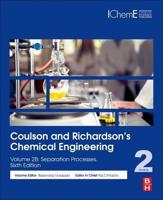Publisher's Synopsis
Food flavor, appearance, and texture are the sensory properties that influence food acceptance, and among these, flavor is usually the decisive factor for the choice of a particular product. Food Flavors: Chemical, Sensory, and Technological Properties explores the main aspects of food flavors and provides a starting point for further study in focused areas.
Topics discussed include:
- The nature of food odorants and tastants and the way they are perceived by the human olfactory system
- Basic anatomy and physiology of sensory systems involved in flavor sensation, olfactory pathways, and interactions between olfactory and gustatory stimuli
- The fundamentals of flavor compounds formation based on their main precursors (lipids, amino acids, and carbohydrates)
- Technological issues related to flavor compounds
- Physicochemical characteristics of aroma compounds and the main factors that influence aroma binding and release in foods
- Safety and regulatory aspects of flavorings used in foods
- Flavors of essential oils and spices, cheeses, red meat, wine, and bread and bakery products
- Food taints and off-flavors
- Analytical approaches to characterize food flavors
The book also explores the latest technology in artificial olfaction systems with a chapter on the main physical and chemical features of these sensors. Bringing together the combined experience of a host of international experts, the book provides insight into the fundamentals of food flavors and explores the latest advances in flavor analysis.








